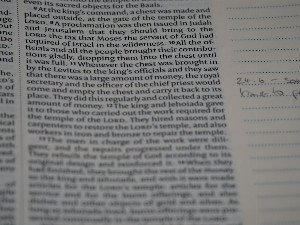Dani Ramdani, Roro Arinda Reswanti J.P., Syifa Fauziah Hamidah, Lindi Utami Marquerette
Digital Financial Literacy Among UNLA Traders in the Use of Non-Cash Payment Methods (QRIS GoPay)
Introduction
Digital financial literacy among unla traders in the use of non-cash payment methods (qris gopay). Boost digital financial literacy & QRIS GoPay adoption among UNLA traders. Our program enhanced understanding of non-cash payments, activating accounts, and fostering financial inclusion.
Abstract
The progression of the digital era necessitates the enhancement of digital financial literacy, particularly among small-scale entrepreneurs. QRIS (Quick Response Code Indonesian Standard) has emerged as a widely adopted digital payment method across Indonesia, including among merchants within the Langlangbuana University (UNLA) environment. Nevertheless, the level of understanding and adoption of this system remains relatively low, primarily due to limited exposure to digital financial education. This program aims to increase merchants’ comprehension of non-cash transactions utilizing QRIS GoPay through an educational approach combined with direct mentoring. Employing a participatory framework, the program encompasses stages of socialization, training, and evaluation. The findings reveal that 85% of participants demonstrated an understanding of QRIS functionality post-program, and 50% successfully activated their QRIS GoPay accounts during the training sessions. These outcomes indicate the program's effectiveness in fostering digital financial literacy and advancing financial inclusion within the UNLA community
Review
The paper, "Digital Financial Literacy Among UNLA Traders in the Use of Non-Cash Payment Methods (QRIS GoPay)," addresses a highly pertinent issue in contemporary financial inclusion: the adoption of digital payment systems, specifically QRIS, among small-scale entrepreneurs. The abstract effectively highlights the critical challenge of low understanding and adoption of such technologies despite their widespread availability, attributing this to a lack of digital financial education. The program's objective to enhance merchants' comprehension and utilization of non-cash transactions through an educational and direct mentoring approach is commendable and directly targets a recognized barrier to economic participation in the digital age. The methodology outlined, employing a participatory framework with stages of socialization, training, and evaluation, appears sound for community-based intervention. The direct mentoring aspect is particularly strong, as it addresses practical hurdles that often impede technology adoption among less digitally native populations. The reported findings are encouraging: an 85% increase in understanding of QRIS functionality and a 50% activation rate for QRIS GoPay accounts post-program. These quantitative outcomes strongly suggest the program's immediate effectiveness in improving digital financial literacy and promoting financial inclusion within the specific UNLA community. While the immediate results are promising, the abstract leaves several areas for further detail and discussion. For instance, information regarding the sample size, specific demographics of the "UNLA traders," and the duration of the training sessions would strengthen the generalizability and replicability of the findings. Additionally, while 50% account activation is a positive step, exploring the reasons behind the remaining 50% non-activation could yield valuable insights for future interventions. A more robust evaluation would ideally include follow-up data on the actual usage rates of QRIS GoPay post-activation and and its impact on the traders' businesses. Despite these points for potential expansion, the paper presents a valuable case study demonstrating a successful approach to bridging the digital financial literacy gap in a specific micro-entrepreneurial context.
Full Text
You need to be logged in to view the full text and Download file of this article - Digital Financial Literacy Among UNLA Traders in the Use of Non-Cash Payment Methods (QRIS GoPay) from Jurnal Pengabdian Tri Bhakti .
Login to View Full Text And DownloadComments
You need to be logged in to post a comment.
Top Blogs by Rating
Beyond the Stereotype: Unpacki...
By Sciaria
Electro-Pulse: Unveiling the U...
By Sciaria
Unlock Your Brainpower: Master...
By Sciaria
Favorite Blog
Andragogy: The Secret to Engag...
By Sciaria
The Spiritual Shelf Life: Navi...
By Sciaria
Unlock Your Brainpower: Master...
By Sciaria




